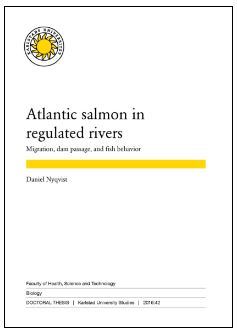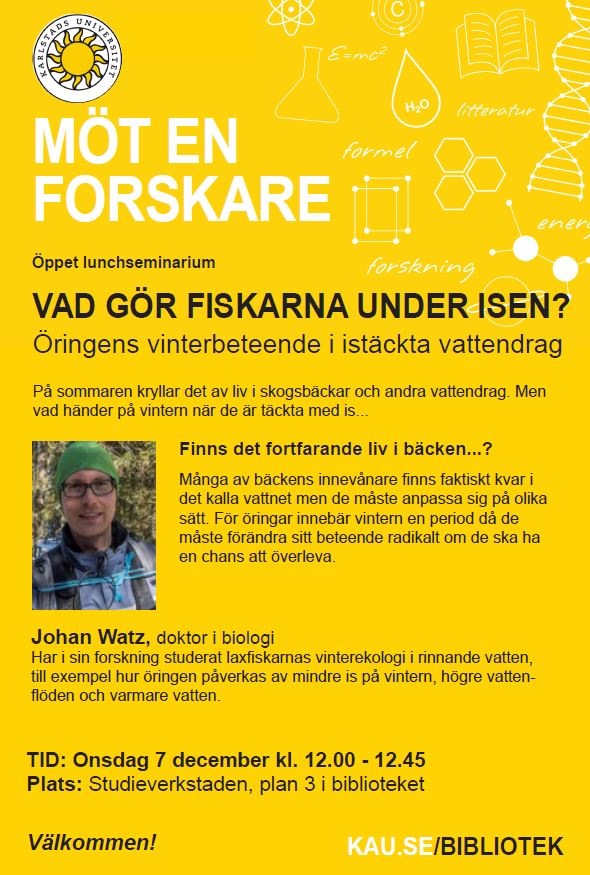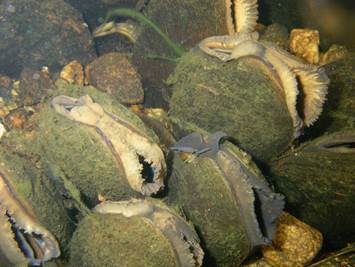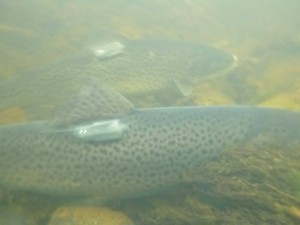Låglutande galler, spaltvidd och fiskpassage
Posted by Daniel Nyqvist | Projekt Galler
Ett låglutande galler (s.k. beta-galler). Då vattenhastigheten mot gallret alltid är mindre än svephastigheten längs med gallret sveps eller leds fisken mot gallrets slut. Vid gallrets slut finns flyktöppningen – tex. en eller flera ingångar till en bypass.
Låglutande galler används allt mer för att leda nedströmsvandrande fiskar till flyktöppningar och säkra pasagevägar förbi vattenkraftverk.Låglutande galler har tillexempel installerats för att passera nedströmsvandrande fisk i Ätran och Mörrumsån. Olle Calles, forskare vid Karlstads Universitet, leder en samling projekt som under det kommande året ska studera för- och nackdelar med låglutande galler med olika spaltvidd. Idén är att experimentellt testa hur låglutande galler med olika spaltvidd påverkar den avledande funktionen för laxsmolt och ål. Men även hydrauliska förhållanden (fallförluster) och drivgodsproblematik kommer att studeras under de olika spaltvidder. Hypotesen, vad gäller fisken, är att låglutande galler har både en fysisk och en beteendemässig avledande funktion. Detta innebär att även fisk som fysiskt kan passera gallret väljer att inte göra det utan att de i stället visar en preferens för flyktöppningarna. Genom att testa olika spaltvidder hoppas man kunna hitta en spaltvidd som är optimal för att kombinera fiskpassage och vattenkraftsproduktion.
Ålprojektet finansieras av Krafttag Ål medan lax experimenten finansieras av Energiforsks “Miljöprogram vattenkraft”.
Läs mer om ålexperimentet här: Betydelsen av spaltvidd på låglutande galler med avseende på ålpassage.







